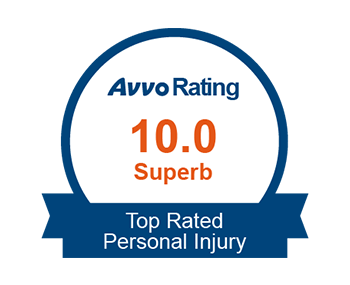Whiplash injuries can have a profound impact on your life, both physically and financially. If you have suffered a whiplash injury in New York State, it is crucial to understand how to document your injury properly to ensure you receive the compensation you deserve. This process can be complex, requiring careful attention to detail and a thorough understanding of how to navigate the legal landscape. By comprehensively documenting your injury, you can build a strong case that maximizes your potential compensation and helps you recover from this often debilitating condition.
Understanding Whiplash Injuries
Whiplash is a term used to describe a neck injury that occurs when the head is suddenly and forcefully thrown backward and then forward. This rapid movement can cause the neck muscles and ligaments to stretch and tear, leading to pain, stiffness, and other symptoms. Whiplash is commonly associated with car accidents, particularly rear-end collisions, but it can also result from other types of trauma, such as sports injuries or falls.
The symptoms of whiplash can vary widely from person to person, ranging from mild discomfort to severe, chronic pain. Common symptoms include neck pain and stiffness, headaches, dizziness, blurred vision, and difficulty concentrating. In some cases, the symptoms may not appear immediately after the injury, making it even more important to document your condition thoroughly and accurately.
The Importance of Early Medical Evaluation
The first step in documenting your whiplash injury is to seek medical attention as soon as possible after the incident. Even if you do not experience immediate pain or discomfort, it is essential to have a medical professional evaluate your condition. Whiplash injuries can sometimes take hours or even days to manifest, and delaying medical treatment can make it more challenging to prove the extent of your injuries later on.
When you visit a doctor, ensure that you provide a detailed account of the incident that caused your injury, as well as a complete description of any symptoms you are experiencing. Your doctor will likely perform a physical examination and may order imaging tests, such as X-rays or MRIs, to assess the extent of the damage. All of this information will be crucial in building your case, so it is important to be thorough and honest during your medical evaluation.
Keeping a Detailed Record of Your Symptoms
In addition to seeking medical treatment, it is important to keep a detailed record of your symptoms as they develop. This record should include the date and time of each symptom, as well as a description of the pain or discomfort you are experiencing. Be specific about the location, intensity, and duration of the pain, as well as any other symptoms, such as headaches, dizziness, or difficulty concentrating.
Maintaining a symptom diary can be invaluable in proving the ongoing impact of your injury. It can also help your doctor adjust your treatment plan as needed and provide evidence of the progression of your symptoms over time. This record should be kept up to date and as detailed as possible to strengthen your case.
Following Your Doctor’s Treatment Plan
Another critical aspect of documenting your whiplash injury is following your doctor’s treatment plan. This may include taking prescribed medications, attending physical therapy sessions, or following specific at-home care instructions. Adhering to your treatment plan not only helps you recover more quickly, but it also demonstrates to the insurance company or court that you are taking your injury seriously and are committed to your recovery.
Failure to follow your doctor’s recommendations can be used against you by insurance companies or opposing counsel to argue that your injury is not as severe as you claim. To avoid this, make sure to attend all scheduled appointments, follow through with recommended therapies, and keep records of any treatments you receive. If you experience any difficulties with your treatment plan, such as adverse side effects from medication or difficulty attending appointments due to your injury, be sure to communicate these issues to your doctor and document them thoroughly.
The team is very personable, patient and empathetic with their clients. They are upfront with you and will explain the entire process with you, they never lead you to believe otherwise, they tell you like it is and will not sell you a million dollar dream. Trust in Andrews, Bernstein & Maranto, PLLC, they work for you and he looks out for your best interest.” - Jane D.
Gathering Evidence from the Accident Scene
In addition to medical documentation, evidence from the scene of the accident can be crucial in proving your whiplash injury and securing maximum compensation. If possible, gather evidence immediately following the accident, or ask someone else to do so if you are unable. This evidence can include photographs of the accident scene, damage to the vehicles involved, and any visible injuries you sustained.
It is also important to obtain contact information from any witnesses to the accident, as their statements can support your claim. Additionally, make sure to obtain a copy of the police report if one was filed, as this document can provide an objective account of the incident and help establish liability.
If your whiplash injury resulted from a slip and fall or another type of accident, similar steps should be taken to gather evidence. Photographs of the hazardous condition that caused your fall, witness statements, and any incident reports filed by property owners or managers can all serve as important documentation in your case.
Documenting Lost Wages and Other Financial Impacts
Whiplash injuries can result in significant financial losses, including lost wages due to time off work and expenses related to medical treatment and rehabilitation. Documenting these financial impacts is essential to ensuring you receive full compensation for your injury.
Keep records of any time you miss from work due to your injury, including sick days, vacation days, and any unpaid leave you are forced to take. If your injury prevents you from returning to work in the same capacity as before, document any reductions in your hours or responsibilities, as well as any resulting decrease in your income.
In addition to lost wages, keep detailed records of all medical expenses related to your injury, including doctor visits, prescriptions, physical therapy, and any necessary medical equipment, such as braces or neck collars. If you require assistance with daily tasks due to your injury, such as hiring a caregiver or paying for childcare, these expenses should also be documented.
Should I Take The First Settlement Offer? Steps to File a Personal Injury ClaimRelated Videos
The Role of Pain and Suffering in Your Compensation
In addition to economic damages, such as medical expenses and lost wages, you may also be entitled to compensation for non-economic damages, such as pain and suffering. Pain and suffering refer to the physical pain and emotional distress you have experienced as a result of your whiplash injury. This type of compensation is more subjective and can be more challenging to quantify, but it is an important component of your overall compensation.
To document pain and suffering, continue to keep detailed records of your symptoms and how they affect your daily life. This can include descriptions of how your injury has impacted your ability to perform routine tasks, participate in activities you enjoy, or maintain relationships with family and friends. Statements from family members, friends, or coworkers who have witnessed the impact of your injury can also support your claim for pain and suffering.
Consulting with an Experienced Attorney
Navigating the process of documenting your whiplash injury and pursuing compensation can be overwhelming, especially when you are dealing with the physical and emotional toll of your injury. Consulting with an experienced personal injury attorney can provide invaluable guidance and support throughout this process.
An attorney can help you gather and organize the necessary documentation, negotiate with insurance companies on your behalf, and represent your interests in court if necessary. They can also help you understand the full extent of your damages and ensure that you pursue all available avenues for compensation.
Building a Strong Legal Case
To maximize your compensation for a whiplash injury in New York State, it is important to build a strong legal case that is supported by comprehensive documentation. This includes medical records, evidence from the accident scene, records of financial losses, and documentation of pain and suffering.
Your attorney will work with you to gather and present this evidence in the most effective way possible. They will also help you navigate any legal challenges that arise and advocate for your rights throughout the legal process. By building a strong case, you can increase your chances of receiving the compensation you need to recover from your injury and move forward with your life.
Verdicts & Settlements
The Importance of Timely Action
One of the most important factors in securing maximum compensation for a whiplash injury is taking timely action. In New York State, there are strict deadlines, known as statutes of limitations, that govern how long you have to file a personal injury claim. If you miss these deadlines, you may lose your right to pursue compensation altogether.
To ensure that you meet all necessary deadlines, it is important to consult with an attorney as soon as possible after your injury. They can help you understand the specific timelines that apply to your case and ensure that all necessary paperwork is filed promptly. Taking timely action not only protects your legal rights but also ensures that you can begin the process of securing compensation as quickly as possible.
Seeking Justice and Fair Compensation
Suffering a whiplash injury can be a life-altering experience, affecting your physical health, emotional well-being, and financial stability. While no amount of compensation can fully erase the impact of your injury, pursuing a fair and just settlement can help you recover the resources you need to rebuild your life.
Documenting your whiplash injury thoroughly and accurately is the key to securing the compensation you deserve. By following the steps outlined above and working with an experienced attorney, you can build a strong case that maximizes your chances of a successful outcome.
At Andrews, Bernstein & Maranto, PLLC, we understand the challenges you face after a whiplash injury. Our dedicated team of personal injury attorneys is here to help you navigate the complex legal process and fight for the compensation you deserve. If you or a loved one has suffered a whiplash injury in New York State, do not hesitate to reach out to us for a free consultation. Let us put our experience to work for you and help you take the first step toward recovery. Contact us today to learn more about how we can assist you in your pursuit of justice and fair compensation.












